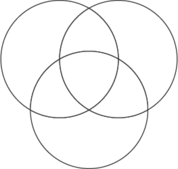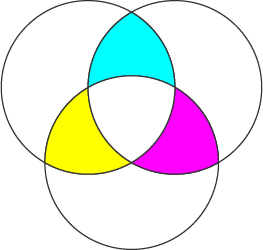Playing accurately and with confidence is the goal of all performing musicians – including natural trumpet players. As the natural trumpet (see Fig. 0.1) has no mechanisms, the movements required to play it can’t be seen and easily monitored. Mastering natural trumpet playing requires that the player has a precise control of the form and speed of the airstream. A slight deviation results in a ‘cracked’ note or even a different note than the intended one, and even experienced players are prone to making audible mistakes in performance. The fine motoric skills that are required are too complex to control and steer consciously, making natural trumpet playing a good example of an activity that can suffer when the player uses internal focus. Factors that can affect the result include skill level, difficulty of the music, and the level of arousal (nervousness) of the player. As discussed in the previous chapter, the crucial question for the player is, therefore, “on what should my attention be focussed in order to achieve the optimal and reliable result?” What the player focuses on directly before and during playing could either help or hinder the desired outcome. This applies to both the learning process (practicing) as well as during performance.
In the previous chapters, literature was discussed that led to the conclusion that using an external focus of attention (focussing on the intended effect of one’s movements) is more beneficial than either focussing on directing the movements themselves or being occupied in analysis or judgement during playing. Studies in sports and movement sciences showed positive results for movement effectiveness (including accuracy), efficiency, movement form, and automaticity (Wulf, 2013).
Self-efficacy can also be positively affected by external focus (Pascua, Wulf & Lewthwaite, 2015). Benefits have been found to affect both beginners and more experienced people, and in early as well as later stages of learning. The great majority of studies have been in the field of sports. A study by Guss-West and Wulf (2016) about ballet dancers argued that although external focus was preferable to internal focus for enhancing movement effectiveness and efficiency in dancers, only 27% of the 53 international professional ballet dancers surveyed reported using external focus instructions in their coaching.
Apart from the studies made by Duke et al. (2011), Atkins & Duke (2013), Atkins (2017) and Mornell & Wulf (2019) (see Chapter 2), no significant studies have been made investigating the possible benefits of external focus for musicians’ learning and performance. As already mentioned, Duke’s study (2011) involved testing a simple finger movement and not complex music-making; Atkins & Duke (2013) and Atkins (2017) also tested using a short fragment of a few notes. Mornell & Wulfs’ study compared internal and external foci for music performance involving participants each playing a complex piece of music. The current research was motivated by the desire to introduce explicit external focus methods to naturalistic music-making contexts. The three studies presented in the following chapters were designed to see how external focus affected musicians in three increasingly complex field environments that also involved learning.
Measuring accuracy gives a clear indication of whether a skill has improved. Improved self-efficacy, confidence and motivation are indicators that the subject’s ability to learn has been positively influenced (Bandura, 1997; Dweck, 2000; 2008; Wulf & Lewthwaite, 2016). Engagement, satisfaction and enjoyment levels are indicators of whether the learning or performing experience was a positive one for the participant. According to studies on anticipatory auditory imagery, ensemble playing can also be expected to be positively affected (Keller, 2012).
All three projects involved the players practicing and/or rehearsing using external focus. The context and design of each project differed and each project investigated specific independent variables. The assumption was that external focus would positively affect both skill acquisition (learning) and the performance experience of the participants.
The overall hypothesis was that using external focus would be beneficial to musicians’ learning and performance experience.
The effects of external focus on musicians’ learning and performance were explored in three consecutive empirical projects involving conservatoire students. The three projects took place between March 2015 and April 2016. In the first two projects the subjects were natural trumpet players (n=7) and the same people participated in both projects. Using natural trumpeters as test subjects was not only practical (the researcher is a natural trumpet player and teacher), but also expedient because measuring accuracy in natural trumpet playing is relatively straightforward. Even slight inaccuracies in motor control can be heard as clearly audible mistakes. Inaccuracies during playing can simply be counted. The third project involved a chamber music ensemble with mixed instrumentalists (natural trumpeters, string players and keyboard players).
The projects were designed in such a way that each consecutive project represented a more complex context: Project One tested a series of practice sessions where external focus was compared to the participants’ "usual" ways of practicing, and Project Two explored the effects of external focus in the preparation of a trumpet consort performance. Project Three was the preparation of a concert involving not only trumpeters, but also string players and keyboard players in order to ascertain whether external focus could benefit musicians in general and not only trumpeters.
Each project was designed to investigate the effects of specific independent variables, and the design varied for each project. The projects looked at the effects of external focus on aspects of learning and performance experience of the participants and specifically involved looking at the effects on accuracy, self-efficacy, confidence, motivation, engagement, satisfaction, and enjoyment, as well as general performance experience. A mixed methods design was used in each project to gather both quantitative and qualitative data. The variables of all three projects are illustrated in Figure 4.1.
LEARNING and PERFORMANCE
o Accuracy (Project 1)
o Self-efficacy (Project 1)
o Confidence (Projects 1, 2, 3)
o Motivation (Projects 1, 2, 3)
o Engagement (Projects 1, 2, 3)
o Satisfaction (Projects 2, 3)
o Enjoyment (Projects 2, 3)
o General performance experience (Projects 2, 3)
o Ensemble playing (Projects 2, 3)
APT: Designing an Audiation Practice Tool
Over the course of the three projects the participants were subjected to different forms of external focus (explained in more detail in the following section). The use of the Audiation Practice Tool (described below), however, featured in all three. Verbal-based instructions were avoided as much as was possible.
A practice tool was designed to test and explore external focus in all three empirical projects. The APT (Audiation Practice Tool) is based on Edwin Gordon’s definition of audiation (see Chapter 3) and illustrated below in the way it was presented to the subjects.
The uses of clear and vivid musical imagery, singing, gesturing and playing variations were described in detail in Chapter 3. Alternate fingerings or changes in tonality – as suggested by Gordon (2001) – is not possible on a natural trumpet as it is restricted to the harmonic series of a specific key.
APT: Audiation Practice Tool
Instructions:
Imagine the phrase you are about to play with as much nuance as you can evoke (e.g. pitch, tone quality, volume, articulation, transition from one note to another…)
Sing and gesture the phrase dramatically
Play the phrase
Play another version(s) of the phrase
How External Focus was used in the Projects
The use of external focus was integrated in each project, sometimes in an overt way and sometimes covertly as well. In the intervention phase of Project One the participants were asked to practice using APT. The participants in Project Two were asked to prepare their repertoire using APT, and rehearsals were conducted with the intention of avoiding technical (declarative) language. The project and concert itself focussed on showing the role of the trumpet in baroque Europe rather than the (more usual) focus of showcasing the music. The performance incorporated narrative (by an actor/narrator) and audience interaction, and resulted in less focus on perfect playing than usual for a chamber music concert. Project Three was designed so that the participants were busy with the idea of communicating emotion and affect during performance (again, rather than concentrating on technical perfection). The idea for the concert preparation was to create a learning environment that encouraged exploration – through improvisation and the use of APT. As in Project Two, the use of declarative instruction was avoided.
References for PART II: Chapters 4–7
Bandura, A. (1997). Self-efficacy: The exercise of control. New York: Freeman.
Duke, R., Cash, C. & Allen, S. (2011). Focus of attention affects performance of motor skills in music. Journal of Research in Music Education, 59(1), 44–55.
Dweck, C. (2000). Self-theories: Their role in motivation, personality, and development (Essays in social psychology). Philadelphia: Psychology Press.
Dweck, C. (2008). Mindset: The new psychology of success. New York: Ballantine Books.
Frick, U. (2011). An Introduction to qualitative research. London: Sage.
Gordon, E. (2001). Preparatory audiation, audiation, and music learning theory. Chicago, USA: GIA Publications.
Guss-West, C., & Wulf, G. (2016). Attentional focus in classical ballet: A survey of professional dancers. Journal of Dance Medicine and Science, 20, 23–29.
Keller, P. (2012). Mental imagery in music performance: underlying mechanisms and potential benefits. Annals of the New York Academy of Sciences. ISSN 0077-8923.
Pascua, L., Wulf, G., & Lewethwaite, R. (2015). Additive benefits of external focus and enhanced performance expectancy for motor learning. Journal of Sports Sciences, 33(1), 58–66.
Ripa, C. (1603). Overo Descrittione Di Diverse Imagini cauate dall’antichità, & di Propria inuentione. Rome.
Ritchie, L. & Williamon, A. (2010). Measuring distinct types of musical self-efficacy. Psychology of Music, 39(3), 328–344.
Schmidt, R., & Lee, T. (2012). Principles of practice for learning motor skills: Some implications for practice and instruction in music. In A. Mornell (Ed.), Art in Motion II (pp. 17–51). Frankfurt am Main: Peter Lang.
Trusheim, W. (1991). Audiation and mental imagery: Implications for Artistic Performance. The Quarterly, 2(1–2), 138–147.
Wulf, G. (2013). Attentional focus and motor learning: a review of 15 years. International review of Sport and Exercise Psychology, 6(1), 77–104.
Wulf, G., & Lewthwaite, R. (2016). Optimizing performance through intrinsic motivation and attention for learning: The OPTIMAL theory of motor learning. Psychonomic Bulletin & Review.










